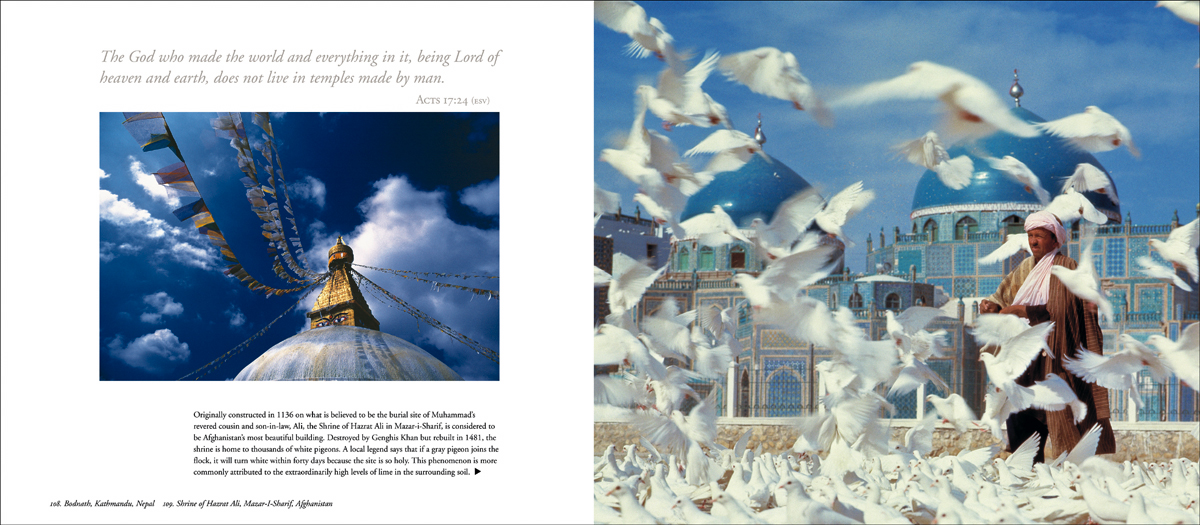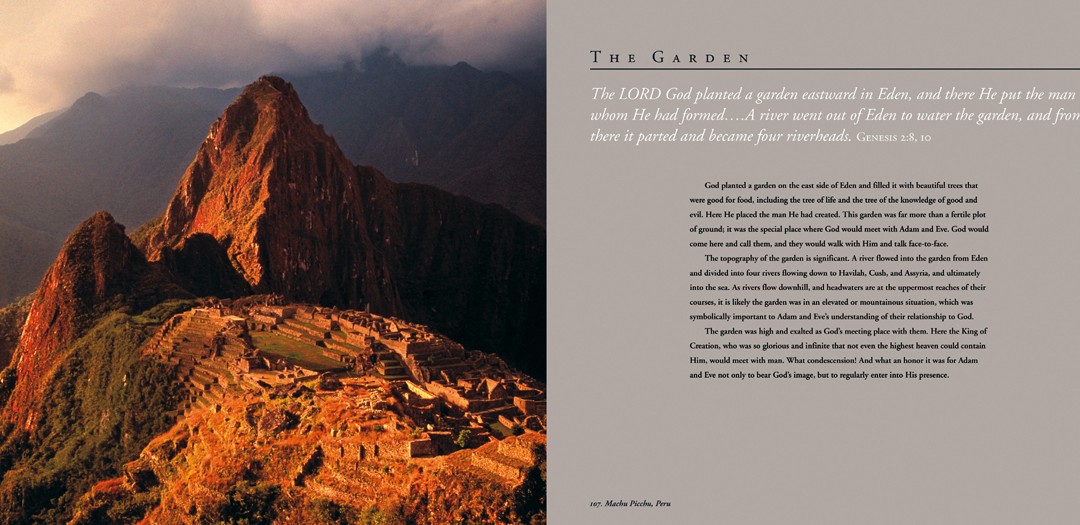Machu Picchu, Peru
The LORD God planted a garden eastward in Eden, and there He put the man whom He had formed…. A river went out of Eden to water the garden, and from there it parted and became four riverheads. Genesis 2:8, 10
God planted a garden on the east side of Eden and filled it with beautiful trees that were good for food, including the tree of life and the tree of the knowledge of good and evil. Here He placed the man He had created. This garden was far more than a fertile plot of ground; it was the special place where God would meet with Adam and Eve. God would come here and call them, and they would walk with Him and talk face-to-face.
The topography of the garden is significant. A river flowed into it from Eden and divided into four rivers flowing down to Havilah, Cush, and Assyria, and ultimately into the sea. As rivers flow downhill, and headwaters are at the uppermost reaches of their courses, it is likely the garden was in an elevated or mountainous situation, which was important to Adam and Eve’s understanding of their relationship to God. From this perspective they could better appreciate the vastness of the earth and the even greater vastness of the heavens. Yes, Adam and Eve were exalted as God’s image-bearers, but God was infinitely more exalted. He was the creator of all they saw, who stooped down to behold His creation. Though the highest heavens could not contain Him, He would condescend to meet with Adam and Eve in the Garden. Thus, the placement of the Garden would inspire a proper view of man and of God. “What is man that You are mindful of him, and the son of man that You visit him?” (Psalm 8:4)
The God who made the world and everything in it, being Lord of heaven and earth, does not live in temples made by man. Acts 17:24 esv

Bodnath, Kathmandu, Nepal — Shrine of Hazrat Ali, Mazar-I-Sharif, Afghanistan
Originally constructed in 1136 on what is believed to be the burial site of Muhammad’s revered cousin and son-in-law, Ali, the Shrine of Hazrat Ali in Mazar-i-Sharif, is considered to be Afghanistan’s most beautiful building. Destroyed by Genghis Khan but rebuilt in 1481, the shrine is home to thousands of white pigeons. A local legend says that if a gray pigeon joins the flock, it will turn white within forty days because the site is so holy. This phenomenon is more commonly attributed to the extraordinarily high levels of lime in the surrounding soil.
He sits enthroned above the circle of the earth, and its people are like grasshoppers…. He brings princes to naught and reduces the rulers of this world to nothing. Isaiah 40:22 niv

Mosque and Tirich Mir Peak, Chitral, Pakistan — Lamayuru Gompa, Ladakh, India
Chitral Mosque, in northern Pakistan, is dwarfed by 25,230-foot Tirich Mir, the highest mountain in the Hindu Kush range, which stands more than fifty miles away.
Located on the western edge of the Tibetan Plateau, Ladakh is the last bastion of pure Tibetan Buddhist culture in the world. One of the principal monasteries here is Lamayuru, which was founded in the late tenth century and once housed up to four hundred monks.
Thus says the LORD: “Heaven is My throne, and earth is My footstool. Where is the house that you will build Me?” Isaiah 66:1

Bad Shahi Mosque, Lahore, Pakistan — Leh Gompa, Ladakh, India — Shinto Shrine, Nikko, Japan
Bad Shahi in Lahore, Pakistan, is one of the world’s largest mosques, with a courtyard capable of holding sixty thousand people.
Perched on a hill above the 11,400-foot-high capital of Ladakh, Leh Gompa sports hundreds of prayer flags, or Lung-ta, which blow in the ever present breeze. Made in five traditional colors representing the five Buddha families and the five elements of space (blue), water (white), fire (red), air (green), and earth (yellow), the flags are printed with prayers that Buddhists believe carry blessing to all beings.
The forest setting of a Shinto shrine in Nikko, Japan, is indicative of nature and ancestor worship. Chief in Shinto’s pantheon of eight million gods is the sun goddess and great ancestress of the Imperial House.

